We all know that Michael Jordan brought unparalleled fame to the basketball line of Nike shoes. You can’t overstate the tsunami-level status achieved by the Air Jordan 1, but what about its near-twin sibling, the Nike Dunk?
To the untrained eye, the Nike Dunks almost look like the same shoe as the Air Jordan 1. But true sneakerheads can sniff out the difference. It’s time to settle the debate of Dunks vs. Jordan 1, two of the most popular sneakers worldwide.
In this post, we’ll give you all the information you need to discern the difference between these two incredible pairs of sneakers. Let’s break out the history books of the Dunk High vs. Jordan 1, then jump into a detailed rundown of both shoes so you can always spot the difference.
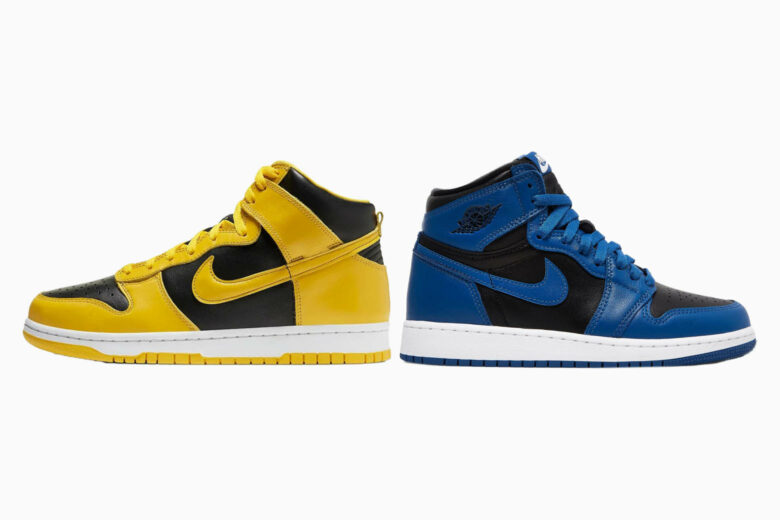
The Battle of the Titans: Dunks vs. Jordan 1
Many people question which came first when considering the Dunk High vs. Jordan 1. If you want to settle the debate about which came first, Dunks vs. Jordan 1, the Air Jordan 1 holds the title by a tiny sliver.
History of Air Jordan 1
To some industries, 1985 was just another year. Not for Nike and not for the world of sneakers. Nike founder and CEO Phil Knight was determined to break into the professional basketball market and selected Michael Jordan to make this happen.
Although Jordan was hesitant to sign with a company that had yet to release a proven basketball shoe, an incredible $500,000 per year contract forced him to put pen to paper. One of the most expensive rookie endorsements ever proved to be a worthwhile investment.
In late 1984, Michael Jordan received his first pair of Air Jordan sneakers, which would be released to the public on April 1, 1985. The design by Peter Moore instantly became iconic, partly due to the rebel attitude. The Air Jordan 1 shoes did not adhere to the strict NBA rules, and Nike paid a reported $5,000 fine for every game worn.
The rest is history.
In one year, Nike sold a mind-boggling $126 million worth of Air Jordan shoes. Many variations of the Air Jordans followed, including the 1989 release of the popular Air Jordan 4. We have a detailed guide on the best Air Jordans of all time if you want to dive further into this amazing collection.
Their status was immediate and long-lasting, pushing through decade after decade of popularity.

The apprentice: Nike Dunk
Less than a half year after the public release of the Jordan 1, Dunks hit the shelves in August of 1985.
Unlike the Jordan 1, Dunks were made for the collegiate level of basketball. Nike did its best to ignite a flame through its “Be True to Your School” marketing campaign, but the Dunks couldn’t keep up with the red-hot status of the Air Jordan 1.
Nike Dunks never fizzled away entirely. While the Dunk High vs. Jordan 1 argument weighed heavily in favor of the Jordan for years, the Dunks stuck around and eventually found a grip on top of skateboard decks around the world.
In the early 2000s, Dunks started to make regular appearances in skateparks. By 2015, Nike brought back the “Be True to Your School” campaign, which boosted the Nike Dunk High back into the basketball world.
Now, the sibling rivalry is in full swing. If you want to answer which is more popular between the Dunk High vs. Jordan 1, you’ll likely find a debate more heated than the ones at Thanksgiving dinner.
Nike Dunk High vs. Jordan 1: A detailed comparison
Thankfully, we don’t have to settle the score between these two designs. The Nike Dunk High and Air Jordan 1 both hold status worthy of inclusion with the best men’s luxury sneakers. And while they have a similar look, the devil is in the details.
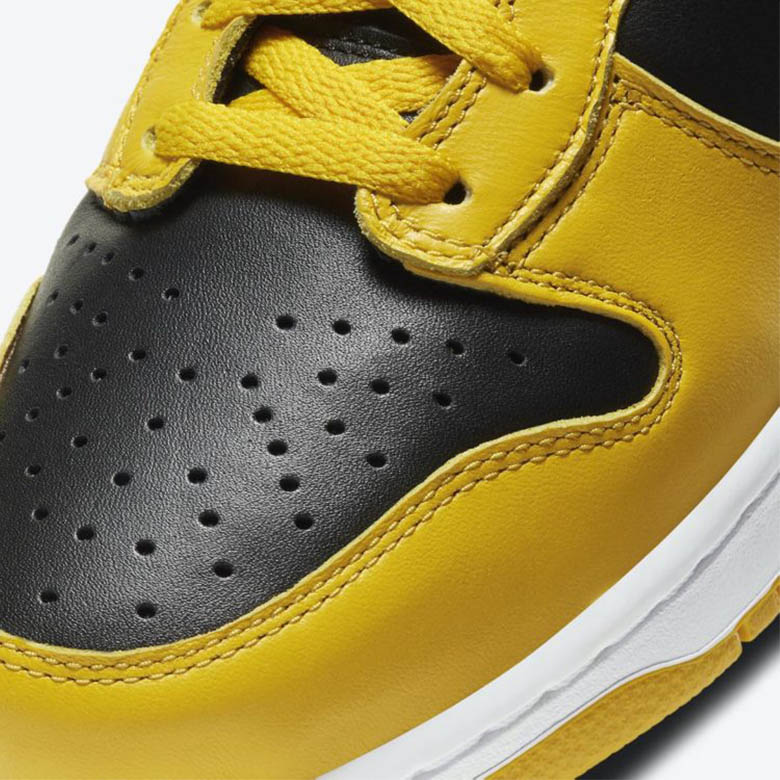
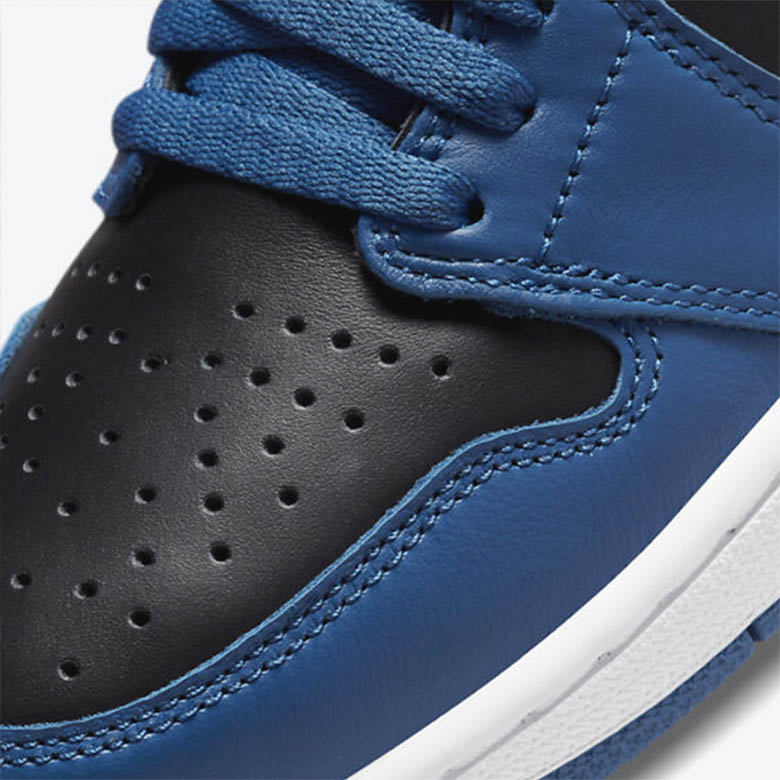
The top eyelet
There’s one surefire way to tell the difference between Dunks vs. Jordan 1: the top eyelet. While they both have the same number of total eyelets (nine), the Air Jordan 1’s top eyelet is part of the prominent ankle strap. The Dunk Highs have the ninth eyelet above the strap instead.
This gives you one easy way to distinguish between the shoes, even from far away. But it’s not the only difference.
Ankle lace strap
Keep your eyes focused on the same area to spot another difference in the Dunk High vs. Jordan 1. The supportive ankle strap is not the same for both models.
On the Dunk High, the lace flaps are not stitched down tightly to the eyelet area. It was once cool to wear them with unlaced flaps, flapping in the wind like laundry on a summer day.
Meanwhile, the Air Jordan 1 has always gone for full support. Their goal is to break the opponents’ ankles, not your own. Their ankle straps are stitched to the eyelet area, and held firmly in place, providing additional structure.
Air-filled soles
Air Jordan 1 isn’t only named for the high-flying acrobatics of their namesake superstar. They include air in the midsole, another major difference between the Dunks vs. Jordan 1.
Unfortunately, this rule doesn’t always hold. There have been crossovers from both sides throughout the many years and variations. Some Air Jordan 1s used the Dunk midsole without air, and likewise, some Nike Dunks have used a midsole with an air pocket, especially the SB Dunks. They’re both very comfortable shoes for standing all day, though.
Check out the list of the best Jordans of all time to see other variations of these incredible sneakers.
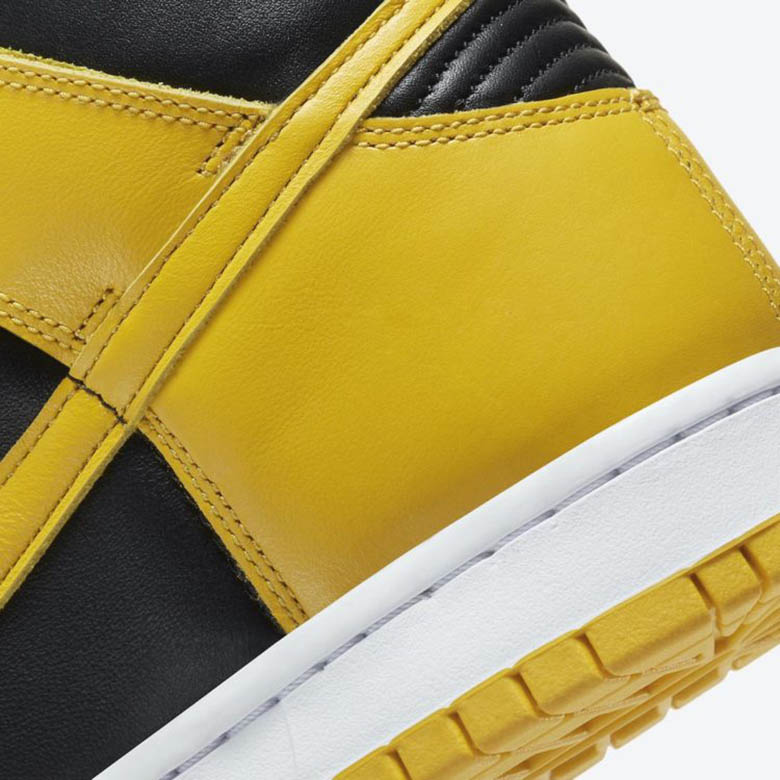
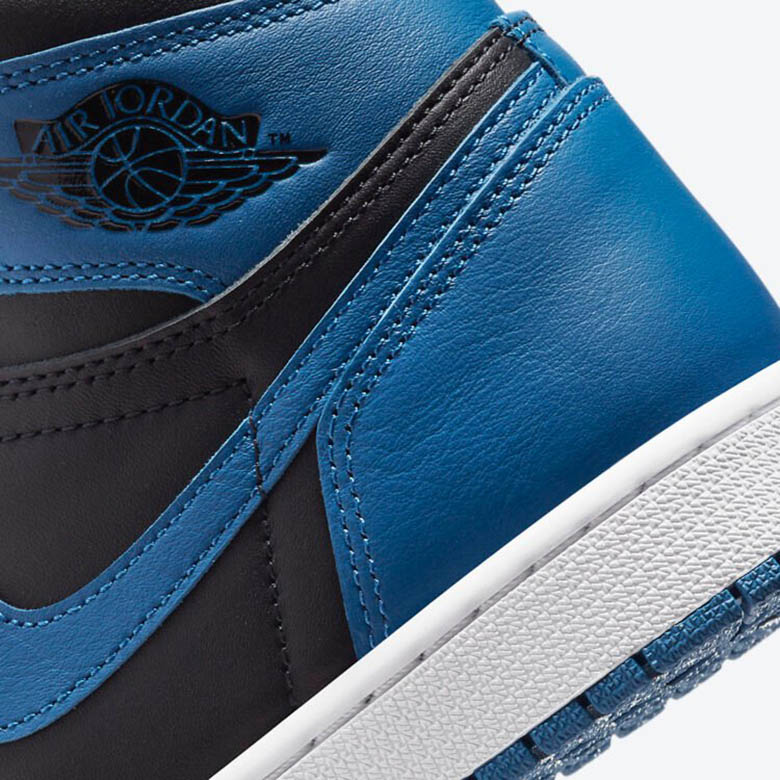
Take a closer look
You’ll find additional differences between these iconic shoe models if you break out the microscope. The Dunk took its tread pattern from the Jordan 1 with curved sections under the ball of the foot and an angled grid pattern at the rear.
But the Dunk High features a slightly narrower design in the arch, while the Jordan 1 has additional detail on each tread section. The differences aren’t extensive, but they are present.
You can also find that the Air Jordan 1 uses an extra reinforcement strap on top of the front three eyelets, while the Dunk’s eyelets have a more zigzag pattern.
Original color differences
At this point, the Dunks and Air Jordans have been produced in a nearly limitless amount of color choices, patterns, and artistic collaborations. Look at the Jordan 11 cool grey for one of our favorite choices.
But originally, the Air Jordan 1 came in prominent red and black color tones, matching the Chicago Bulls logo. The shoes did not adhere to the so-called 51 percent rule, where white was required to be the majority color used on NBA courts.
The first generation of Nike Dunks, released in 1985, were released as college-specific shoes featuring two-tone colors of the eight schools selected, including the universities of Kentucky, Michigan, Iowa, Villanova, Syracuse, St. John’s, Las Vegas, and Georgetown.
Main differences Nike Dunks vs. Jordan 1
| Characteristic | Nike Dunk | Air Jordan 1 |
|---|---|---|
| Top eyelet | Above strap | In strap |
| Ankle strap | Free-floating | Stitched down |
| Soles | Airless | Air-filled |
| Original colors | Various collegiate | Chicago Bulls |
Frequently asked questions about Dunks vs. Jordan 1
Although the shoes have a similar look, there are distinct differences between the Nike Dunk and Air Jordan lineups. You can easily tell the difference from far away by inspecting the top eyelet, where the Jordan’s will be incorporated into the ankle strap and the Dunk’s sits above it. Check our visual guide of the Nike Dunks vs Air Jordan 1 to see the exact differences.
It’s difficult to say whether the Dunks or Jordans are more comfortable. These are both considered amazing shoes, even keeping up with some of the best sneakers for women. The Jordan’s features air-filled midsoles and might provide more cushioning, but the slight differences in shape will fit each person differently.
The Air Jordan 1 was released in April 1985, before the August 1985 release of the Nike Dunk. The Jordan went on to fame for many years on end, while the Dunk struggled to find its footing but has now made a prominent comeback.
Although similar shoes, the Dunks have a slightly narrower design than the AF1. Other small differences are scattered throughout the design, so the feel will be slightly different if you pay close attention. However, some people say that the Dunks fit the same as the AF1.










